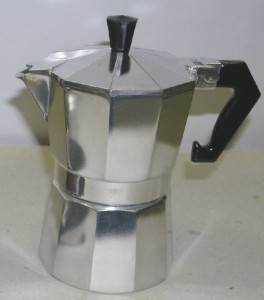Puerto Rican Kitchen Essentials
If you go into the kitchen of a Puerto Rican person whether they live in San Juan, New York, Chicago or Florida, there are 10 items you will find in every one of those kitchens. You can't cook Puerto Rican food for Puerto Rican Recipes if you don't have these items.
These are the essential items in any Puerto Rican Kitchen
Pilon – Puerto Rican version of a mortar and pestel. Preferably made of wood, this is a large hollowed out bowl on a stand with a small, rounded wooden instrument used to grind, mash or pulverize ingredients and seasonings such as garlic or dried oregano to use for flavoring meats or other items being prepared for cooking. Can also be used to mix your own version of adobo and other seasoning needed for Puerto Rican Recipes.

Tostonera – these come in various sizes and shapes. The most common tostonera is 2 pieces of flat wood screwed together with hinges. One should have a rounded out impression for making right sized Tostoneras. This kitchen essential item is used to smash down fried green banana portions to be fried a second time. Other variations will have a small piece of wood in one side and a larger indentation on the other side to form the plantain piece into a small cup to stuff with shrimp or other foods. These can also be used to make mini mofongos.

Puerto Rican Food
Caldero – assorted sized cast iron pots are absolutely required in any Puerto Rican kitchen. Asopoa, Sopa de Pollo, carne guisado, rice and other Puerto Rican Recipes all need to be cooked in a cast iron pot to come out perfectly, although some may prefer to use a modern rice cooker instead. Cast iron pots are perfect for even heat distribution while cooking and always add a little sabor.

Cafetera – Usually a cast aluminum 3 piece coffee pot that steams the water and forces it up through the coffee to make perfect Puerto Rican Coffee. This is different from a regular drip pot that only allows the hot water to drip through the coffee. The forcing of steam through the coffee gives it the richest flavor.
Colador – another option to making Puerto Rican Coffee by boiling the ground coffee and in a pot and straining the coffee through the cloth strainer to hold back the coffee grounds from the rich full flavor brewed coffee. Because of the staining of the coffee grounds, this kitchen item is often referred to the dirty sock.
Sazon - is a seasoning is used on meats, fish, poultry and even to flavor soups and stews. Most common ingredients include, cilantro, achiote, garlic, salt. Sazon is used to season many Puerto Rican Food dishes.
Puerto Rican Recipes
Adobo – Adobo is a very basic seasoning for all Puerto Rican cooking. Adobo is made up or several dry ingredients mixed together and sprinkled on meats before cooking or in asopaos or guisados. Adobo is made by mixing garlic powder, onion powder, dried oregano and black pepper. Salt is also added but should be used sparingly to avoid over salting of your food. There are many commercial brands of adobo, Goya being the most popular in the United States and Bohio brand is more recognized in Puerto Rico. We recommend making your own adobo so you can adjust the amounts of the separate seasonings used to your own taste.
Sofrito – is essential when cooking beans, rice dishes, soups or asopaos. Sofrito gets most of its flavor from recao and aji dulces, little sweet peppers. Roasted red pepper, yellow onions, plum tomatoes, garlic and cubanelle peppers are also added. Sofrito is usually cooked in annatto oil or olive oil with cured ham or salted pork.
Recaito – is very similar to sofrito but has more culantro. It is a mixture of culantro, peppers, garlic and onions. It gets its name from being referred to as "little culantro". Great for seasoning stews or soups.
Puerto Rican Cook Books
Related Articles
Puerto Rican Coquito Recipe
Puerto Rican Coffee
Savory Puerto Rican Meat Dishes
Pumpkin: So Poor and Yet So Rich
5 Must-Have Traditional Puerto Rican Dishes
Puerto Rican Recipes - Puerto Rican Food
Preserving our traditional Puerto Rican cuisine
Piragua - Puerto Rico Piragua
Introduction to Arroz con Gandules
Pasteles de Masa - Pasteles Recipe

No comments:
Post a Comment